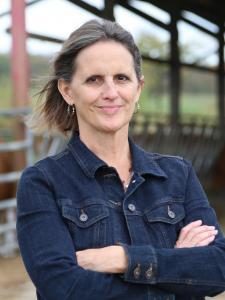Agronomy, Conservation, Homepage Slider, New Uses
Federal Legislation and Carbon Markets (Part 3)
By Dusty Sonnenberg, CCA, Ohio Field Leader, a project of the Ohio Soybean Council and soybean check-off.
Carbon Credits are a concept that most in agriculture have now heard about. All the major agriculture publications have featured articles about the new revenue opportunities carbon markets can present to landowners and farmers. While the big picture of a carbon market system is simple to understand, the details are more complicated.
There are several legal issues that can surround carbon market agreements. “In the legal world right now, we are asking the question: What are they? Are they real property? Are they tangible, are they intangible? Are they personal property? What are these things, and how do we track them in the legal world,” said Peggy Hall, Associate Professor and Field Specialist in Ag Resource Law at The Ohio State University. “If there is interest by farmers or landowners to engage in this carbon market, there are a couple of legal issues that need to be considered.”

Any market system should have a built-in audit system from the initial design to ensure the confidence of the participants. Ideally this audit is conducted by a non-biased third party. “A lot of attention is being given to the certification of credits,” said Hall. “A third-party auditor would verify that a credit has in fact been generated, that the practices are in place, and that it is believed that those practices yield the amount of reduction or sequestration of carbon that the unit of credit represents to be traded.”
“There is still a lot of uncertainty about the entire carbon market and carbon credit system, and the methodology of establishing those credits and the practices that actually do reduce or sequester the carbon,” said Hall. “That is something to be very aware of when reviewing the terminology in the market agreement carefully to determine how they are going to ascertain the practices and credits created.”
Carbon market contracts should also specify the payment structure. “We have heard things across the board regarding how the payment is calculated and the amounts,” said Hall. “For some agreements there is a guaranteed payment, and for some it is tied to the actual market and there may be a price floor but it can fluctuate. Participants need to be very careful when examining the payment provisions and understand how the payment will be made. Some payments may be in the form of annual cash payments, while others may state that it will be in crypto currency. Some may require the purchase of products or services from the company that is bringing the credits together and reselling them on the market.”
Like all new technology in agriculture, who owns the data is also a question in the carbon market arena.

This is a unique area of particular concern. “From what I am hearing, all the agreements address data and the companies want to have the right to the data generated,” said Hall. “The agreement may obligate the farmer or landowner to share that data with the integrator of the credits. There are a lot of data privacy issues to be aware of. Some agreements clarify the data transparency that the integrator participates in. Farmers need to understand what data is expected to be shared and what will happen with it.”
A final legal concern has to do with what happens if the deal goes wrong. “It is important to understand up front, what occurs if the farmers breeches the agreement, or what if the integrator breeches the agreement,” said Hall. “There are many reasons why a breech of the agreement by either party could occur, but farmers should be aware of the potential consequences if that should occur.”
A website has been created by the Ohio Soybean Council staff to act as a clearinghouse for all the available carbon market information and simplify the comparison process for Ohio farmers. The information is available by visiting www.soyohio.org and clicking on the “Carbon Markets” tab at the top.